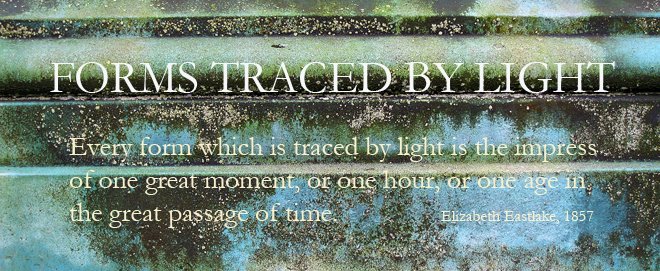 is the question that James Elkins is asking at just about this point in the lecture that he was giving this afternoon on "Visual Practices across the University" - suggesting the ways in which a course could be run for freshman that would ask about the place of visual culture in disciplines across the university, thus getting them to - to what? I wasn't quite sure about the answer to that - which is why I posed a question trying to get my own ideas clearer: to get them to think about the importance of looking, and how and why we look? to get them to understand different conventions - and that there are different conventions of both representation and interpretation? to get them to think about connections that may be drawn between disciplines? to stop them taking visual representation for granted? Or - and this is where my own mind went - to show how one can find inspirational or intriguing visual source material is surprising places? I particularly liked the simulations of what happens to the atoms in copper when under stress produced by Farid Abraham, which were beautiful enough to have turned me on to studying chemistry (if only I'd seen a movie like that back in chemistry class in VIF, I mightn't have turned to the distraction of making pen and ink drawings of test tubes, of the wire brushes used for cleaning out test tubes, of bunsen burners, of the view from the chemistry lab - and subsequently of things in the art studio, once I got turned out of chemistry class, and never took the O level exam in it. The problem was with gram atoms - I just couldn't get my head around the hypothetical nature of these pesky things - I wanted visual, not mathematical proof).
is the question that James Elkins is asking at just about this point in the lecture that he was giving this afternoon on "Visual Practices across the University" - suggesting the ways in which a course could be run for freshman that would ask about the place of visual culture in disciplines across the university, thus getting them to - to what? I wasn't quite sure about the answer to that - which is why I posed a question trying to get my own ideas clearer: to get them to think about the importance of looking, and how and why we look? to get them to understand different conventions - and that there are different conventions of both representation and interpretation? to get them to think about connections that may be drawn between disciplines? to stop them taking visual representation for granted? Or - and this is where my own mind went - to show how one can find inspirational or intriguing visual source material is surprising places? I particularly liked the simulations of what happens to the atoms in copper when under stress produced by Farid Abraham, which were beautiful enough to have turned me on to studying chemistry (if only I'd seen a movie like that back in chemistry class in VIF, I mightn't have turned to the distraction of making pen and ink drawings of test tubes, of the wire brushes used for cleaning out test tubes, of bunsen burners, of the view from the chemistry lab - and subsequently of things in the art studio, once I got turned out of chemistry class, and never took the O level exam in it. The problem was with gram atoms - I just couldn't get my head around the hypothetical nature of these pesky things - I wanted visual, not mathematical proof).Probably the point of giving cross disciplinary lectures (and interestingly, no one asked Elkins about disciplinarity as such - has the moment to discuss it been and gone) is not to think about them as situations in which to take photographs, even if discreetly, with an iPhone... but if it's to ask questions that send one away thinking, I certainly came away with plenty - about what things are not picturable; about what counts as "interesting" in relation to the visual; about the occasions in which visual information is produced for lay people (like me) but isn't actually necessary to scientific inquiry. But above all, I came away realizing that I really need to know much, much more about how people actually process visual information, and how this kind of cognition differs from the verbal.


No comments:
Post a Comment